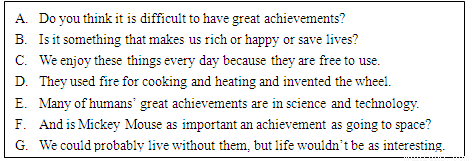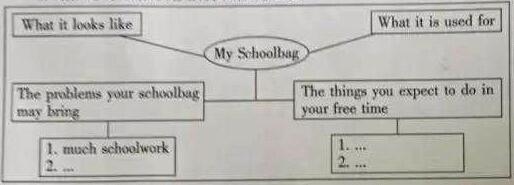
科目: 来源:2016年初中毕业升学考试(江西卷)英语(解析版) 题型:阅读理解

In many countries, tattoos are in fashion (时尚). On TV you can often see a famous actor or musician with a tattoo on his arm or foot. Many sports players have them, too. In the US, tattoos are very popular. Forty percent of Americans aged between 26 and 40 have a tattoo, and 60 percent of customers in US tattoo parlors are women. These people are often professional people like doctor, teachers and lawyers.
However, tattoos are not modern. In fact, they are very old in human history. For example, archaeologists (考古学家) found a human in ice from 5,000 years ago. He had 57 tattoos on his back, ankles, legs, knees and feet. Tattoos were used for many different reasons. In ancient Egypt, people got tattoos because they were “beautiful”. But in ancient Rome, tattoos were negative (负面的) and put on criminals and prisoners. In India, tattoos were religious (宗教的).
In the 16th and 17th century, European sailors (船员) arrived on the islands of Polynesia. They saw tattoos for the first time. The people on the islands had tattoos on their shoulders, chests, backs and legs. Often the tattoos were of animals or natural features like a river or a mountain. The European sailors liked them and made their own tattoos, so the idea traveled to Europe. Tattoos in Polynesia are still important today. They show information about a person’s history, their island or their job.
So is there a connection (联系) between traditional tattoos and fashionable tattoos? And can you call tattoos a fashion? Chris Rainier is an expert in tattoos and his book Ancient Marks has photos of tattoos from all over the world. He thinks people in modern societies often have tattoos because they are a connection to the traditional world. But tattoos aren’t a fashion like clothes or a haircut because you can’t put them on and take them off again like a jacket or a hat. They are permanent (永久的) and for life.
1.When were tattoos brought to Europe?
A. 5,000 years ago. B. 60 years ago.
C. Until recently. D. In the 16th and 17th century.
2. What does the underlined word “parlors” mean?
A. School. B. Stores.
C. Hospitals. D. Theaters.
3. What’s the writer’s opinion about tattoos?
A. Tattoos are religious in modern societies.
B. Tattoos connect tradition with fashion.
C. Tattoos are a fashion among famous people.
D. Tattoos show information about a person’s hobby.
4.What would be the best title for the passage?
A. Tattoos' History.
B. Tattoos in Polynesia.
C. Tattoos on a Human in Ice.
D. Tattoos in Fashion and for Life.
查看答案和解析>>
科目: 来源:2016年初中毕业升学考试(江西卷)英语(解析版) 题型:七选五
请先阅读下面短文,掌握其大意,然后根据短文内容从下面方框内的七个选项中,选择五个还原到文中,使短文意思通顺、结构完整,并在答题卡上将其序号涂黑。
Humans’ Greatest Achievements
The Earth is 4.5 billion years old, but the human race has lived on it for just 200,000 years. In that short time, we have achieved some amazing things.
1. The list is almost endless. The invention of the airplane has changed our lives. The discovery of antibiotics (抗生素) has saved the lives of millions of people. Can you imagine living without electricity? What about the printing press (印刷术)? Without the printing press, you wouldn’t be reading this. In the last 50 years, there have been great achievements in communication, such as radio, TV, computers, the Internet, and smartphones (智能手机). 2.
What about the arts? The arts have brought pleasure to many people, but are the Beatles and Bach more important than antibiotics? 3.
Finally, we must not forget humans’ early achievements. 4. We can’t imagine modern life without cooked food and cars.
What are humans’ greatest achievements? To answer the question, we need to decide what we mean by “great”. 5. Or is it just something that makes us say “Wow,” like the Great Wall? What do you think?

查看答案和解析>>
科目: 来源:2016年初中毕业升学考试(江西卷)英语(解析版) 题型:补全对话
请阅读下面对话,根据对话内容补上所缺的句子,使对话通顺、合理,意思完整。并将答案填到答题卡的相应位置。
( R=Receptionist (宾馆接待员), J=Jack )
R: Hello. 1.
J: Could you give us the room number of Mrs. Taylor, please?
R: Is she a guest here at the hotel?
J: Yes, she’s our English teacher.
R: 2.
J: She arrived yesterday.
R: Here we are …Room 602. Would you like me to call the room?
J: Yes, please. That would be great.
R: 3. She’s not in her room, I’m sorry.
J: Oh dear. I need to speak to her.
R: Why not look in the restaurant? It’s time for breakfast. 4.
J: I’ve been there already. She’s not there. And she’s not there. And she’s not in the gift shop, either.
R: 5.
J: Yes. Could you tell her to call me when she comes back?
R: Sure, no problem.
查看答案和解析>>
科目: 来源:2016年初中毕业升学考试(江西卷)英语(解析版) 题型:书面表达
书包伴我学习,伴我成长,某英文报以“My schoolbag”为题,举办中学生征文活动。请根据下列的图表信息,写一篇短文。内容包括:书包的外形特征、用途和书包背后的课业问题以及课余你期望做的事情。
提示:1、短文应包括图表中的全部信息,条理清楚,行文连贯,段落分明;
2、短文中不能出现真实的人名和地名;
3、词数不少于80,开头已给出,不计入总次数。

My Schoolbag
I have a schoolbag.___________________________________________________________
查看答案和解析>>
科目: 来源:2016年初中毕业升学考试(山东青岛卷)英语(解析版) 题型:单项填空
David is ______ eight-year-old boy with short black hair.
A. / B. a C. an D. the
查看答案和解析>>
科目: 来源:2016年初中毕业升学考试(山东青岛卷)英语(解析版) 题型:单项填空
Nancy took her temperature and found she had a ______.
A. cough B. toothache C. cold D. fever
查看答案和解析>>
科目: 来源:2016年初中毕业升学考试(山东青岛卷)英语(解析版) 题型:单项填空
— ______ do you usually share happiness with?
— My parents and my best friend.
A. Who B. Whose C. What D. How
查看答案和解析>>
科目: 来源:2016年初中毕业升学考试(山东青岛卷)英语(解析版) 题型:单项填空
I like hiking in the forest because the air is pretty ______.
A. free B. dirty C. polluted D. fresh
查看答案和解析>>
科目: 来源:2016年初中毕业升学考试(山东青岛卷)英语(解析版) 题型:单项填空
Ladies and gentlemen, attention please! I have ______ important to tell you.
A. nothing B. something
C. everything D. anything
查看答案和解析>>
科目: 来源:2016年初中毕业升学考试(山东青岛卷)英语(解析版) 题型:单项填空
Tim is going to give his father a surprise ______ Father’s Day.
A. in B. at C. on D. by
查看答案和解析>>
湖北省互联网违法和不良信息举报平台 | 网上有害信息举报专区 | 电信诈骗举报专区 | 涉历史虚无主义有害信息举报专区 | 涉企侵权举报专区
违法和不良信息举报电话:027-86699610 举报邮箱:58377363@163.com